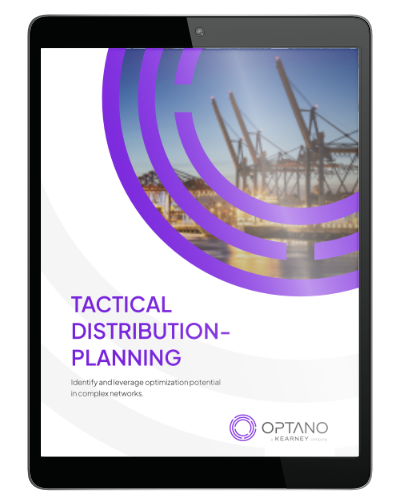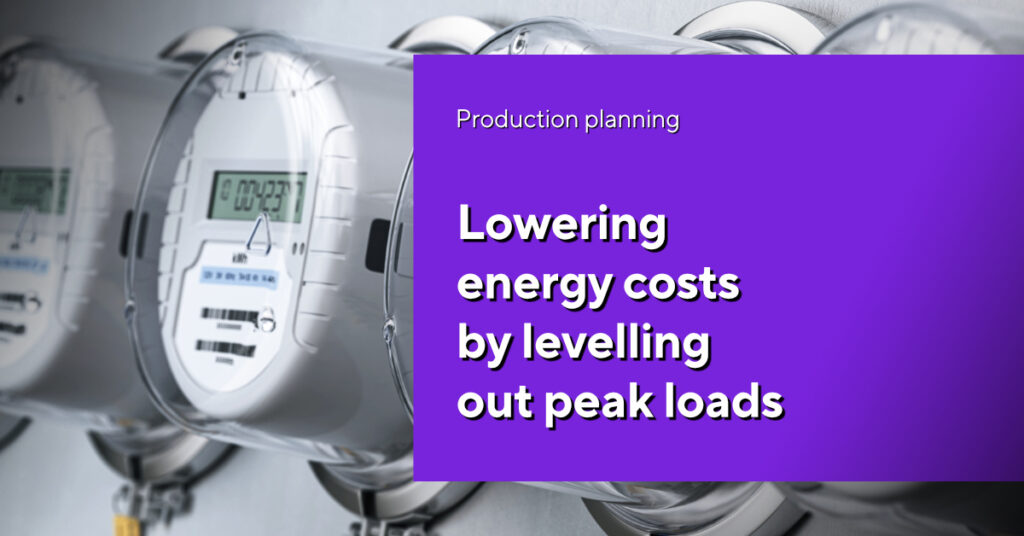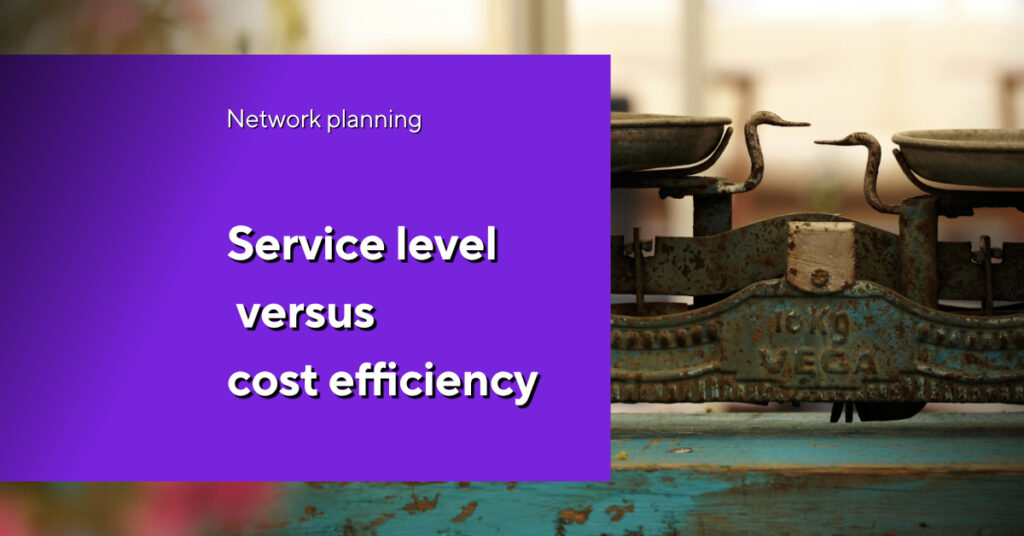Flowpath Optimization in Tactical Distribution Planning
Global uncertainties, volatile demand, and increasing sustainability requirements are pushing companies to make their distribution networks more efficient and resilient. A key lever in this effort is Flowpath Optimization – the dynamic control of product flows between hubs, distribution centers, and end customers. This article explores the significance, challenges, and solution approaches of Flowpath Optimization in the context of tactical distribution planning.
For supply chain executives, Flowpath Optimization offers a direct lever to manage costs, service levels, and network resilience.
Complexity meets individual interests
Tactical distribution planning is complex and marked by uncertainty. Companies must make decisions about product flows that are both efficient in the short term and robust in the long term. In multi-echelon network structures – with hubs, distribution centers, and cross-docks – transparency is often lacking, making it difficult to steer flows optimally. Once defined, routes are often too rigid to respond to changes in demand or external disruptions such as strikes or weather events. Without integrating current data on inventory, capacity, and demand, planning remains reactive and inefficient.
The involvement of many stakeholders – from logistics and sales to IT – further complicates coordination and decision-making. At the same time, there is growing pressure to meet sustainability goals and reduce CO₂ emissions in logistics. These demands make it clear that traditional planning approaches are reaching their limits and that specialized supply chain software is needed.
Flowpath-Optimization
Flowpath Optimization provides a structured approach to address these challenges. It enables dynamic and scenario-based control of product flows within the network. The goal is to determine the optimal route for each product through the network – considering costs, service levels, capacity, and sustainability targets.
A key principle is the dynamic reallocation of flows. Instead of static routes, flows are regularly reassessed and adjusted. Scenario planning in logistics allows companies to simulate different network strategies and evaluate their impact. Constraints such as warehouse capacity, delivery times, and CO₂ targets are directly integrated into the optimization. Iterative modeling ensures that planning is continuously improved and adapted to real-world conditions.
More interesting articles
Optimization Goals and KPI Ranges
The benefits of Flowpath Optimization can be illustrated using typical performance indicators. Studies and benchmarks show that companies can reduce transport costs by 10 to 15% through optimized flows. At the same time, service levels can be improved by 5 to 10 percentage points. Environmental goals also benefit: CO₂ emissions can be reduced by 8 to 15%. Planning time is often shortened by 30 to 60%, enabling faster responses to market changes.
Compared to traditional planning approaches, Flowpath Optimization achieves significantly higher savings, especially in complex distribution networks with dynamic demand.
These figures show that Flowpath Optimization is not only economically sound but also contributes to achieving strategic and sustainable business goals.
Success Factors for Implementation
Successfully introducing Flowpath Optimization depends on several factors. Early involvement of all relevant stakeholders – especially from logistics, sales, and IT – is crucial to create buy-in and facilitate implementation. The quality and availability of data also play a central role. Demand forecasts, inventory levels, and capacity data must be reliable and up to date to deliver meaningful optimization results.
Model transparency is another key factor. Optimization results should be presented in a clear and understandable way to build trust in the solution. An iterative rollout – for example, through pilot projects – allows companies to gather experience, make adjustments, and scale the solution step by step.
A structured change management approach with clear roles, communication channels, and feedback loops supports adoption across all levels of the organization.
Positive Experiences and Proven Practices
Experience from successful projects shows that Flowpath Optimization is particularly effective when understood as a continuous process. Companies that regularly analyze and adjust their flows benefit from greater responsiveness and better network utilization.
A key success factor is close integration with adjacent planning areas such as transportation, warehousing, and production. By integrating these processes, a holistic view emerges that enables well-informed decisions. Choosing the right tools is also critical: solutions that clearly represent complex relationships and are usable in operations foster acceptance and ease implementation.
Another positive trend is the growing willingness of companies to make data-driven decisions. With clearly defined goals, transparent models, and a realistic data strategy, optimization potential can be systematically unlocked. Involving operational teams in modeling and validation ensures practical results and strengthens trust in the solution.
What OPTANO has to offer
OPTANO offers a powerful platform for mathematical optimization, specifically tailored to the requirements of tactical distribution planning. By combining scenario planning, dynamic reallocation, and integrated data processing, OPTANO enables informed decision-making in complex network structures.
The software takes into account relevant constraints such as transport costs, warehouse capacities, and service level targets, delivering transparent results that can be directly applied to operational planning. Thanks to its modular architecture, OPTANO can be flexibly integrated into existing IT systems and helps companies continuously improve their networks.
With OPTANO, companies can approach Flowpath Optimization in a structured and practical way – from initial analysis to modeling and implementation. This transforms a complex planning challenge into a manageable process with measurable value.
More than just a tool
Flowpath Optimization is more than a technical tool – it is a strategic lever for designing resilient, efficient, and sustainable distribution networks. Companies that adopt this approach early can not only reduce costs but also secure their long-term competitiveness. The combination of dynamic control, scenario planning, and operational applicability makes Flowpath Optimization a key component of modern logistics strategies.
Flowpath Optimization enables dynamic control of product flows in complex networks. Typical KPI improvements include up to 25% cost reduction, 15% higher service levels, and 20% lower CO₂ emissions. Success factors include stakeholder involvement, data quality, and iterative implementation. Positive experiences show that holistic integration and transparent models foster acceptance and impact. OPTANO supports this with a powerful platform for mathematical optimization – practical, scalable, and effective.
Next level distribution planning
If you’re looking to take your distribution planning to the next level, Flowpath Optimization should be a core part of your tactical planning strategy. The benefits are measurable, implementation is feasible – and the strategic value is substantial.

Find out in the OPTANO fact sheet how companies are using modern decision-making models to master complex challenges in the supply chain: from selecting efficient modes of transport and intelligent warehouse placement to strategic network design. Discover how you can reduce costs, increase service levels, and achieve sustainability goals—all based on reliable analyses rather than gut feelings. Download the fact sheet now and take your network planning to the next level!
To obtain our factsheet, all you need to do is enter your contact details in the space below. A pop-up window will then open to download the whitepaper. Please note that by providing us with your email address, you agree that we may contact you on this topic. You may revoke this agreement at any time by contacting privacy@optano.com.







